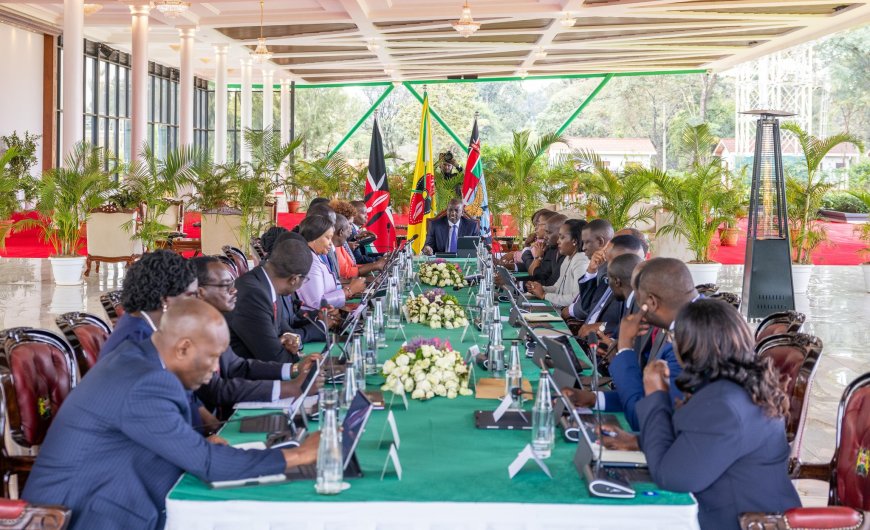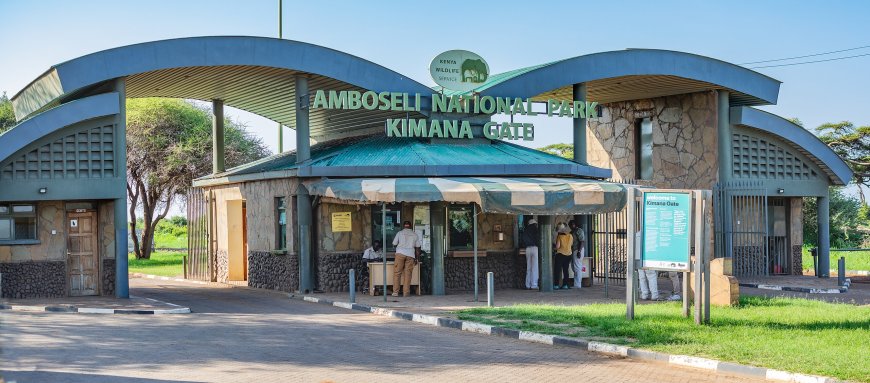County Govt To Take Over National Park After Latest Cabinet Decision
The transfer will be carried out in line with Article 187 of the Constitution, which permits the sharing of functions between national and county governments.

The Cabinet has given the green light for Amboseli National Park to be handed over to the Kajiado County Government.
According to a despatch dated Tuesday, July 29, this decision represents a significant shift in Kenya’s conservation strategy and follows a presidential directive responding to a petition from the Maasai community.
The transfer will be carried out in line with Article 187 of the Constitution, which permits the sharing of functions between national and county governments.
Under a phased co-management arrangement, Kajiado County will manage the park’s daily operations, while the Kenya Wildlife Service (KWS) will continue to oversee national-level conservation responsibilities.

An elephant at Amboseli National Park. /UGANDA SAFARIS
"On conservation, the Cabinet ratified the transfer of Amboseli National Park to the County Government of Kajiado, fulfilling a presidential directive following a petition by the Maasai community," the despatch sent to newsrooms read in part.
"The transfer, executed under Article 187 of the Constitution, introduces a phased co-management model in which Kajiado County assumes operational control while Kenya Wildlife Service (KWS) retains national conservation responsibilities."
The National Treasury will compensate KWS for any revenue losses, with a portion of park income still allocated to national conservation.
Cabinet went on to reveal that the move is intended to empower local communities, promote sustainable stewardship, and ensure equitable sharing of ecological and economic benefits.
Amboseli, famous for its large elephant herds and breathtaking views of Mount Kilimanjaro, continues to be one of Kenya’s key wildlife sanctuaries. The revised management approach seeks to strike a balance between conserving the environment, involving local communities, and promoting economic growth.
The park has emerged as the fastest-growing wildlife park in Kenya, outpacing long-time favourites like the Maasai Mara in tourist numbers. The latest Economic Survey shows a 19 percent increase in visitors to Amboseli, while Maasai Mara experienced an 18 percent drop during the same period.
Tour operators link Amboseli’s surge in popularity to a rise in domestic tourism, made possible by more affordable rates, better infrastructure, and a growing appetite for local travel experiences. The park recorded 266,000 visitors last year—up significantly from just 50,000 five years earlier.
Overall, visits to national parks and game reserves grew by 2.8 percent, rising from 3.6 million in 2023 to 3.7 million in 2024.
The new arrangement is designed to enhance the protection of biodiversity while enabling nearby communities to play a more significant role in managing the park.
This move is viewed as progress toward more inclusive conservation practices that acknowledge the importance of local communities in safeguarding natural resources. It also responds to long-standing demands from the Maasai community for increased participation in the management and sharing of benefits from the renowned park.
Amboseli’s appeal has also been amplified by its strong presence on social media, with viral images of elephants framed by Mount Kilimanjaro and influencer-driven campaigns like #WhyAmboseli drawing the attention of a younger, digitally engaged audience.







